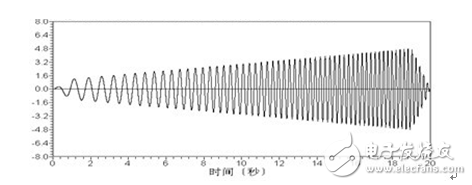Abstract: In real life, we have seen many motors, but we only know that it is an electric motor. If someone asks: Do you know what motor is this? Maybe we can only smile a little, or ask for help!
Whether it is the "Industrial Internet" in the United States, "Industry 4.0" in Germany, or "Made in China 2025" in China, most of the choices of motors are servo motors and variable frequency motors. However, it is not an easy task to distinguish servo motors from inverter motors in detail!

The first concept is that the frequency conversion in an AC motor is not equal to the servo.
The frequency converter is like the piano in the hands of the rhythm master, the sound of the piano can be ever-changing! Similarly, the frequency conversion is to rectify the 50 Hz, 60 Hz AC power of the power frequency into DC power, and then through the controllable switching device (IGBT, IGCT, etc.), the carrier frequency and the PWM adjustment inverter are frequency-adjustable waveforms. A simple frequency converter can only regulate the speed of the AC motor. But now many variable frequency motors have converted the stator magnetic field UVW3 phase of the AC motor into a component that can control the two currents of the motor speed and torque. This allows you to control both the speed of the motor and the torque of the motor.

Servo control can be compared to the goshawk when preying. The goshawk prey is fast, and the target is accurate! The same servo control is precise positioning and fast response. The servo is a control that can be performed by closing the current loop, the speed loop, and the position loop. The essence of AC servo is realized by the PWM method of DC motor to simulate the control mode of DC motor based on the servo control of DC motor. That is to say, AC servo motor must have this part of frequency conversion.

Knowing the internal structure of the servo motor reveals the veil of the servo motor.
The servo motor is mainly composed of a stator and a rotor. The stator has two windings, a field winding and a control winding. The inner rotor is a permanent magnet or an induction coil, a magnetically permeable material, and the rotor rotates under the action of a rotating magnetic field generated by the field winding. At the same time, the servo motor has its own encoder. The driver receives the feedback signal from the encoder in real time, and then compares the feedback value with the target value to adjust the angle of the rotor rotation. It is not difficult to see that the control accuracy of the servo motor is largely determined by the accuracy of the encoder.

Since there is a servo motor, why do you need a variable frequency motor?
At present, the most common AC servo motors are permanent magnet synchronous AC servo motors, but such motors are limited by the process, the power is difficult to be large, and the synchronous servos of more than ten kilowatts are expensive. Therefore, people are more willing to choose the AC asynchronous servo motor that controls the performance. The drive at this time is controlled by a high-end inverter and an encoder feedback loop.
The frequency conversion motor is applied more frequently in the occasions where the speed control and torque control requirements are not high. There is also a variable frequency motor that forms a closed-loop position control after adding a position feedback signal, but its accuracy and response are not high; the servo motor is generally applied in strict control. Requirements, high precision and response requirements.
In general, almost all motion situations that can be controlled by frequency conversion can be replaced by servo control. However, there are two significant differences between servo motors and variable frequency motors in practical applications. First, the price of the servo motor is much higher than that of the inverter motor; the second is that the power of the inverter can be as high as several hundred Kw or even higher, but the servo is as large as several tens of Kw.
The development of new products is inseparable from testing. In order to accurately test the variable frequency motor and servo motor, it must meet the requirements of the motor frequency bandwidth.
Road Traffic Signs are graphical symbols that display traffic regulations and road information. They can make traffic regulations visually, concisely and concisely expressed. At the same time, they also express the content that is difficult to describe in words. They are used to manage traffic and indicate the direction of driving to ensure the smooth flow of roads and the safety of driving. Applicable to highways, urban roads and all special highways, with the nature of the law, vehicles, pedestrians must comply with.
Road Traffic Signs
Road Traffic Signs,Traffic Light Sign,Road Safety Signs,Highway Road Traffic Signs
Yangzhou Heli Photoelectric Co., Ltd. , https://www.heli-eee.com